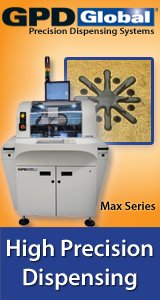Printed Circuit Board Assembly & PCB Design Forum
SMT electronics assembly manufacturing forum.
- SMTnet
- »
- Electronics Forum
- »
- Set Command Variables
Set Command Variables
![]() Hello there!
I am familiar with the Set Command Variables...
- Feb 09, 2005
by
Primus
Hello there!
I am familiar with the Set Command Variables...
- Feb 09, 2005
by
Primus
![]()
![]()
![]() Primus,
Operators should NEVER have the ability to alter ...
- Feb 10, 2005
by
Primus,
Operators should NEVER have the ability to alter ...
- Feb 10, 2005
by
![]()
![]() Actually, I have never had the opportunity to discuss this w...
- Feb 11, 2005
by
Primus
Actually, I have never had the opportunity to discuss this w...
- Feb 11, 2005
by
Primus
![]()
![]()
![]() Simple answer no.
Do the operators currently use set co...
- Feb 11, 2005
by
Simple answer no.
Do the operators currently use set co...
- Feb 11, 2005
by
![]()
![]() We use these machines to insert swedge pins. When I first st...
- Feb 11, 2005
by
Ordie
We use these machines to insert swedge pins. When I first st...
- Feb 11, 2005
by
Ordie
![]()
![]()
![]() As for letting operators alter a program or machine offsets,...
- Feb 11, 2005
by
Ordie
As for letting operators alter a program or machine offsets,...
- Feb 11, 2005
by
Ordie
![]()
![]()
![]() The operators use SET SEQ and SET SEG. I know all about gett...
- Feb 11, 2005
by
Primus
The operators use SET SEQ and SET SEG. I know all about gett...
- Feb 11, 2005
by
Primus
![]()
![]()
![]() I have seen BEC holes drilled wrong also. On a couple of pro...
- Feb 12, 2005
by
Ordie
I have seen BEC holes drilled wrong also. On a couple of pro...
- Feb 12, 2005
by
Ordie
![]()
![]()
![]() We don't have any automated machines (UIC) that insert anyth...
- Feb 12, 2005
by
Primus
We don't have any automated machines (UIC) that insert anyth...
- Feb 12, 2005
by
Primus
![]()
![]()
![]() I think you may be assuming that our operators aren't alread...
- Feb 12, 2005
by
Primus
I think you may be assuming that our operators aren't alread...
- Feb 12, 2005
by
Primus
![]()
![]()
![]() Yes maintenance should shutdown the machine and align it onc...
- Feb 14, 2005
by
Yes maintenance should shutdown the machine and align it onc...
- Feb 14, 2005
by
![]()
![]() If you already have trouble with two set commands, you will ...
- Feb 14, 2005
by
If you already have trouble with two set commands, you will ...
- Feb 14, 2005
by
![]()
![]() I would agree with you there, but I am only a shift supervis...
- Feb 16, 2005
by
Primus
I would agree with you there, but I am only a shift supervis...
- Feb 16, 2005
by
Primus
![]()
![]()
![]() Align the machine... are we talking about the table, the BEC...
- Feb 16, 2005
by
Primus
Align the machine... are we talking about the table, the BEC...
- Feb 16, 2005
by
Primus
![]()
- SMTnet
- »
- Electronics Forum
- »
- Set Command Variables






